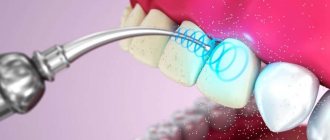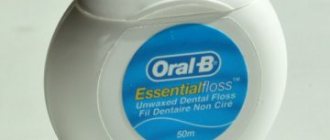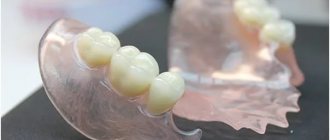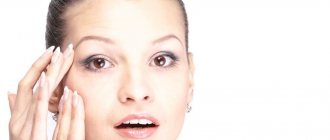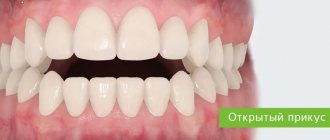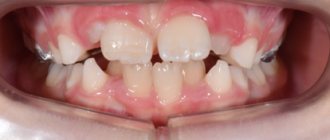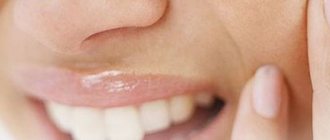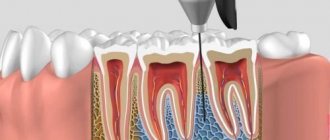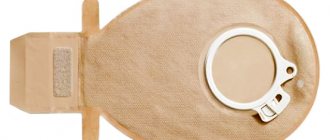Caring for the ears, eyes, nose and mouth
Contents Nose care
Ear care
Eye care
Oral care
What not to do
If you are caring for a weakened or immobile person, remember the rules of hygiene and special body care. Together with experts, we have prepared a guide on how to care for a person’s face and recommendations for procedures.
Things to remember:
- Eyes. It is important to prevent purulent diseases.
- Ears. It is important to prevent the appearance of wax plugs. They reduce hearing and create the sensation of tinnitus.
- Nose. It is important to clear your nose of mucus and crusts. They make breathing difficult and cause discomfort.
- Mouth. It is important to reduce the risks of developing stomatitis and ulcers. Proper care regulates salivation to moisturize the oral mucosa.
Important: Always warn the person about all your actions and manipulations. Even if he is sleeping or unconscious, and, as it seems to you, does not hear or understand you.
Nose care
Carry out the procedure daily and as needed.
You will need:
- Cotton swabs or turundas made from gauze napkins. Sterile turundas can be purchased at the pharmacy or made from clean cotton pads: take half a cotton pad and wrap it around the end of a toothpick, then remove the toothpick and further tighten the turunda by twisting it.
- Vaseline oil (or olive/baby moisturizing oil),
- Towel or diaper.
- Wash your hands and put on gloves.
- Put an apron on the patient.
- Soak a cotton swab (turunda) in a bottle of Vaseline oil. The stick (turunda) should be moistened evenly and moderately so that the oil does not drip from it.
- Take the stick or turunda in your right hand. With your left hand, lift the tip of the patient’s nose and gently, with rotational movements, insert the stick (turunda) into the nostril.
- If a sick person has dry crusts in the nose, hold the stick (turunda) for 1-2 minutes to soften them.
- Remove the cotton swab using a rotating motion.
- Take a clean stick (turunda), soak it in a bottle of Vaseline oil and repeat the procedure until the crusts are completely removed.
- Treat the other nasal passage in the same way.
Important Do not insert a turunda or a cotton swab deep into the nasal passage - this can cause pain and damage the nasal mucosa or thin septum.
Ear care
You will need:
- Boiled water at room temperature.
- Water container.
- Cotton pad (turundas or gauze pads).
- Towel or diaper.
- Absorbent diaper (if the person cannot sit).
Carry out the procedure 1-2 times a week, and also as the ears become dirty.
- Wash your hands.
- Place a towel or diaper on the patient's chest. If a person cannot sit, place an absorbent napkin (diaper) under his head.
- Soak a cotton pad (turunda or gauze) in water and squeeze.
- Using two fingers, gently pull back on the top of your ear to straighten your ear canal.
- Gently wipe the pinna and area behind the ears.
- Repeat the treatment 4-5 times, changing cotton pads (turundas, gauze napkins).
- Treat the other ear in the same way.
Important
- Do not clean the external auditory canal with sharp objects or cotton swabs - they can damage the eardrum or the wall of the ear canal, and also cause infection.
- If you think that a sick person has a wax plug, consult a doctor. Don't try to get rid of it yourself! Tinnitus can be a consequence of infection or taking medications.
Eye care
You will need:
- Boiled water (or chamomile decoction) at room temperature.
- Water container.
- Gauze balls (or cotton pads).
- Towel or diaper.
Carry out the procedure daily in the morning after the patient wakes up, since during sleep, secretions form in the eyes, which stick together the eyelashes. Dry crusts may appear on the eyelids that need to be removed.
- Wash your hands.
- Prepare a container with water or chamomile infusion.
- Place a towel on the patient's chest.
- Take a gauze ball or cotton pad and soak it in the solution and squeeze it out.
- Wipe eyelashes and eyelids from the outer corner to the inner.
- Repeat the treatment 4-5 times, changing balls (cotton pads).
- Blot the remaining solution on your eyes with a dry ball (cotton pad).
- Treat the other eye in the same way.
Sometimes the patient's blinking process slows down, so the mucous membrane of the eye may dry out. To avoid this, you can use moisturizing drops (“Artificial tears”)—1-2 drops in the corner of the eye every 2 hours. Consult your physician before use.
Important
- Do not wipe both eyes with the same gauze ball or cotton pad - you can spread the infection from one eye to the other.
- Do not use cotton wool as it will leave lint on your eyelashes.
- Do not wipe your eyes with a solution of hydrogen peroxide instead of water or chamomile infusion. If it comes into contact with the eyes, it may cause pain and irritation.
Oral care
Carry out the procedure daily in the morning and evening, as well as after each meal and after bouts of vomiting. Severely ill people are at increased risk of oral infections and require ongoing care.
You will need:
- Brush and spatula for the oral cavity (can be purchased at the pharmacy).
- Gauze napkins.
- Freshly squeezed lemon juice with glycerin (1:2).
- Capacity.
- Waterproof diaper or towel.
- Hygienic lipstick.
You can replace the spatula, gauze pads and lemon juice with glycerin with special oral care sticks - sold at the pharmacy.
Skin care products for a sick person: how to choose? We help you understand the variety of foams, dry shampoos, creams and lotions for hygiene, including in special cases - with bedsores, an established stoma, urinary and fecal incontinence Evgeniya RezvanCar Care Workshop
Care
Important It is not necessary to turn a bedridden patient from one side to the other while brushing your teeth - the entire oral cavity can be treated in a position on its side.
- Turn the patient on his side so that his face is on the edge of the pillow.
- Place an absorbent diaper under his head and on his chest.
- Place the container under your chin.
- Soak your toothbrush in lemon juice and glycerin.
- Ask to open your mouth slightly or carefully, without using force, do it yourself with the consent of the patient.
- Using a “sweeping” motion from top to bottom, move along the person’s lower and upper jaws. Repeat several times for 30-40 seconds.
- Wrap the spatula in gauze and soak it in lemon juice and glycerin.
- Gently treat the inner surface of the cheeks, tongue, sublingual area, and hard palate. If there is plaque on the tongue, it must be cleaned with a soft brush or spatula with a gauze cloth.
- Apply chapstick to the person's lips (optional).
- If the person is conscious, let him brush his teeth with a brush and toothpaste himself, and you help him if necessary! If it is difficult for the patient to get to the bathroom, organize everything for this in bed, using an apron, a towel and a spitting container. It is important that a person maintains independence as long as possible.
Important
- To prevent inflammation of the oral mucosa (stomatitis), antiseptic solutions and sprays can be used. If the patient can rinse on his own, then in the form of a liquid; if not, in the form of a spray.
- You can give a small piece of ice to dissolve 2-3 times a day. It will freshen your mouth.
What not to do
- Do not carry out care without consulting a doctor if you have oral cancer. Sometimes, after chemotherapy, oval-shaped ulcers (aphthae) appear in the mouth. In this case, treating the oral cavity with a solution of lemon juice and glycerin is dangerous and painful.
- Do not brush or toothpaste if the person is unable to get out of bed or sit up and has no way to rinse their mouth. In this case, use special sticks or a spatula with a gauze cloth.
- Do not use a hard or medium-hard brush - this can damage your gums.
Important If a person wears dentures, it is important to take them out and carefully carry out oral hygiene to remove food debris and rinse the dentures themselves. Make sure they don't rub. If necessary, consult a specialist.
To make sure you do everything correctly, watch the webinars Peculiarities of caring for the mouth and nose in a seriously ill person and Peculiarities of caring for the eyes and ears of a seriously ill person.
And here you can download the memo so that it is always at hand
Participated in the creation of the material: E.N. Semenova, State Budgetary Healthcare Institution "Center for Palliative Care of the Department of Healthcare", E.A. Druzhinina, branch of the Tsaritsyno Hospice, Arif Ibragimov, State Budgetary Institution "Center for Palliative Care of the Department of Healthcare", State Budgetary Institution "NIIOZMM DZM".
The material was prepared with the participation of the “Caring Workshop”, a project of the Vera Hospice Charitable Foundation, using a grant from the President of the Russian Federation for the development of civil society provided by the Presidential Grants Foundation.
Effect on the body
The effect of use can be explained by the presence of 3 main components in the medicine. Properties of plant components:
- Calendula officinalis flowers - relieves inflammation, reduces the ability of capillaries to pass liquid through the walls, has an antimicrobial effect, stimulates the liver, improves the condition of bile, reduces the concentration of cholesterol in the blood, improves the functioning of the digestive glands;
- chamomile flowers - relieves the inflammatory reaction, has antispasmodic and antimicrobial properties, stops fermentation in the intestinal cavity, improves the secretory activity of the digestive glands;
- yarrow herb - relieves inflammation, kills bacteria, relieves spasms of the digestive organs, stimulates the formation of bile and gastric juice, eliminates allergy symptoms, helps quickly stop bleeding in small wounds and injuries due to the formation of fibrin.
Together, all components complement and enhance each other's effects.
Rotocan - is it possible to use it in gynecology?
Rotokan is not prescribed topically or orally for gynecological diseases. You should not use the medicine for douching, as it is alcohol-based. Getting alcohol into the genital tract can lead to irritation of the vaginal mucosa. A local allergic reaction is also possible to a complex of medicinal herbs. Chlorhexidine or miramistin are suitable for douching. If gynecological diseases occur, you must visit a gynecologist to clarify the diagnosis and complete examination. The doctor will conduct an examination and prescribe the correct therapy.
Analogs
Close non-structural substitutes that are used both in dentistry and gastroenterology are Romazulan. It contains chamomile extract and guaiazulene. Sold as a solution.
Substitutes for dental and other pathologies of the oral cavity:
- Periodontocide - contains clary sage oil, mint oil solution, clove oil, allantoin, thymol, phenyl salicylate; used for bleeding and damaged gums, wearing dentures.
- Stomatidine - contains hexetidine, indicated for tonsillitis, pharyngitis, stomatitis, bleeding gums, tongue diseases, oral candidiasis and other conditions.
The choice of drug is made only by the doctor. You should not select substitutes yourself.
Rotocan is actively used in dentistry and gastroenterology. Due to the combined composition, the effectiveness of treatment increases. The drug rarely provokes adverse reactions. Of all the undesirable effects, only allergies are listed in the instructions. The cost of the medicine is not high. In pharmacies, the medicine is dispensed without a doctor's prescription.
special instructions
The medicine is made on an alcohol basis (ethanol at least 33%). The maximum daily dose of the working solution contains ethanol in the following quantities:
- 250 ml of water and 5 ml of Rotokan - 32 g;
- 250 ml of water and 15 ml of Rotokan - 95 g.
Alcohol dosages should be taken into account when using the drug, especially if it is administered orally or rectally. Also, the medication, due to its ethanol content, reduces the reaction rate, so it should not be used by patients who work with machinery (drivers, mechanics).
Dosage forms of the drug
For ease of use, several forms of the medicine are available. List of forms:
- solution for local and oral use (25, 50, 55, 55, 90, 110 ml);
- solution for local use only (ready-made) Vialine (200 ml);
- Vialine spray (45 ml).
Spray and solution for local use can be used for damage to the oral cavity and pharynx. Oral administration of the medicine is recommended in solution for digestive pathologies.
The drug is produced in the form of a concentrated herbal solution, which has a specific odor. The liquid is poured into a dark glass bottle. The container is packed in a cardboard box.
Rotokan - how to gargle?
Gargling should be done with Rotokan working solution (according to the instructions, the drug should be diluted in water). The liquid temperature should be 30-40 °C. This will help prevent hypothermia of the mucous membrane. The solution should not be hot, as this will cause burns.
To gargle properly, you should take a little working solution into your mouth, and then slowly tilt your head back. While rinsing, pronounce the sound “A” or “Y”. After the procedure, you should not eat or drink for half an hour so as not to wash off the medicine.
Rotocan is prescribed by dentists for treating gums. To do this, a small amount of solution is taken into the mouth. Use your tongue to move the liquid around the mouth for a few seconds and then spit it out. Next, take a fresh portion of the medicine and repeat the procedure. The procedure is carried out until the working solution in the glass runs out.

